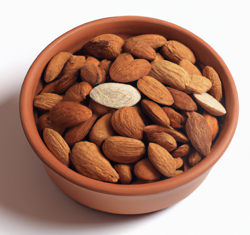As I’ve learned more about why we age, I’ve found that chronic inflammation plays a big role. It often leads to many diseases that are associated with getting older. But here’s the exciting part: If we can learn how to manage chronic inflammation, we can make aging a healthier experience. And guess what? Our diet is a key factor in controlling inflammation. In this article, I’ll share what I’ve discovered about foods that cause inflammation and those that fight against it effectively. I hope that what I’ve learned can help you and your loved ones as you seek a healthier and longer life.
For a long time, I’ve been trying to approach the topic of aging and rejuvenation, but it’s so vast that I could never begin. Ideally, I should start with a systematic approach. But before anything can be systematized, one must understand the subject in various aspects. So, I decided to start anyway, beginning with the topic of nutrition, specifically, what should and shouldn’t be eaten.
Understanding the primary mechanism of aging is crucial if we aim to slow it down. This mechanism is chronic, low-intensity systemic inflammation, which is associated with numerous age-related diseases. These include neurological disorders like Alzheimer’s, dementia, and Parkinson’s, coordination disorders, arthritis, cancer, immune depression, strokes, and heart attacks.
Dr. Nicholas Perricone, a renowned dermatologist and nutritionist, emphasizes that inflammation is not the sole cause but a critical contributor to these diseases. This process fuels the damage and dysfunction of aging at the cellular level. He notes that our diet significantly impacts our body’s inflammatory response, and choosing anti-inflammatory foods is an accessible and effective way to combat aging.
The source of this chronic inflammation is aging cells. While ongoing research suggests the potential to purge these cells from our bodies, this prospect is still in the future and likely to be costly. What we can do presently is adjust our dietary choices, focusing on anti-inflammatory foods.
Inflammatory Foods to Avoid for Anti-Aging
So, what should we exclude from our diet? Products rich in refined carbohydrates. This includes bread and baked goods, confectionery items that contain sugar and starch, such as white bread, pasta, pizza, various cakes, pastries, and so on.

It’s especially harmful when pastries include any cream or are made from puff pastry. Puff pastry is prepared using butter, but from a commercial standpoint, it’s unprofitable to use high-quality butter. Instead, various plant fats are used which are processed in a special way, creating trans-isomers of fatty acids. These hardened fats are added to confectionery products, giving them a pleasing appearance and taste, and a long shelf-life, which is commercially beneficial but significantly damaging to health, causing inflammation at the very least. Of course, they are also high in calories, but that’s not the main concern today.
The second thing to avoid is sugar-containing beverages. Everyone is familiar with Coca-Cola, Fanta, lemonade, and so on. But in addition to these, fruit juices or ‘fresh’ juices should also be avoided. The reason is that a healthy person, with good teeth, doesn’t need these in their diet. Apples, apricots, and other fruits naturally contain a balanced amount of sugar (fructose) and pectin, which doesn’t trigger a carbohydrate ‘shock’ in the body. ‘Fresh’ juice is an excess that actually causes harm. I feel the same way about smoothies because, again, a person with well-developed jaws and healthy teeth should strive to eat most of their food in its whole form.

The next category to be aware of includes fried foods such as french fries, various nuggets, breaded cutlets, steaks, burgers, and so on. These items can stimulate inflammation. Special attention should be given to fast-food chains like McDonald’s and similar establishments. Sausages and smoked or cured meats can also cause chronic inflammation, so it’s necessary to avoid them.
As for dried fruits like apricots, figs, raisins, and dates, many consider them undeniably healthy. However, they contain a large amount of easily digestible carbohydrates. Regardless of where these carbohydrates come from, if you eat a large number of dates or apricots, for example, your blood sugar level will rise as if you’d eaten straight sugar or sweet chocolate. Here, moderation is key. One or two pieces of dried fruit, especially before a workout, won’t hurt. But if you lead a sedentary lifestyle and think that these fruits will only benefit you, you’re mistaken. The carbohydrate content is so high that, at the very least, these products can provoke inflammation, and at most, consuming them in large amounts can lead to weight gain. Weight gain and fat accumulation also contribute to the intensification of chronic inflammatory processes.
Another category of products with pro-inflammatory activity includes fatty dairy products, especially those containing palm oil or other trans-isomers of fatty acids. These are special substances added to dairy products to make them cheaper and more preservable. Unfortunately, besides being cheap, these additives can harm our health by enhancing inflammation.
What to Choose Instead: From Green Leaves to Fatty Fish

Now that we’ve covered foods to avoid, let’s move on to those we should consume daily, as they have the ability to reduce inflammation. First and foremost are green leafy vegetables, such as cabbage, parsley, spinach, celery, and lettuce. These foods can be eaten in any amount and have an anti-inflammatory effect.
Every day, we should also eat tomatoes and red onions, as they contain substances that help reduce inflammation. Red onions also contain quercetin, a beneficial compound I’ll talk more about later.
A very good and accessible product is nuts. Walnuts and almonds, in particular, contain substances that lower inflammation levels and combat atherosclerosis. Of course, these nuts should be dried, not roasted.
Fruits and berries also have the ability to reduce chronic inflammation. Products like apples, blueberries, strawberries, and cherries should be included in the diet daily, whenever possible.
Olive oil is beneficial for reducing the intensity of chronic inflammation. A great combination could be taking leafy vegetables, adding onions and tomatoes, making a salad, and dressing it with olive oil. This kind of anti-inflammatory food should be consumed daily.
Fatty fish, such as salmon, trout, herring, and mackerel, have potent anti-inflammatory effects. This type of fish should be consumed at least twice a week.
In summary, to prevent chronic inflammation, we need to avoid foods that cause inflammation and strive to include in our daily diet those products that have an anti-inflammatory effect.

Many people ask what to do if they’re constantly at work and don’t have the opportunity to eat something healthy during the day. They’re forced to rely on fast food or whatever is available nearby, such as in a cafeteria. In my opinion, the solution to this problem is quite simple. Take a handful of nuts, which weighs about 100 grams and won’t weigh your pocket down, and a few apples, pears, or bananas. I also like to carry carrots with me. 100 grams of nuts and a couple of apples equate to approximately 800 kilocalories, which is enough to satisfy a person’s energy needs and satiety as nuts are very filling and also beneficial. Almonds and walnuts are among the most beneficial nuts due to their high protein content, with almonds containing approximately 21 grams of protein per 100 grams and walnuts around 15 grams, and both have roughly 575-700 calories per 100 grams.
Now we have a list of foods to be wary of and try not to eat at all, as well as a list of foods that should be included in your diet every day. It would also be beneficial if you adopt the rule that every time you sit down to eat, half the plate should be filled with salad. If you follow these simple guidelines, you have a good chance of maintaining your health into old age… or at least until a cure for aging is invented 🙂
In the next article, I will discuss how you can determine and control your biological age.
Disclaimer
The information provided in this article is for general informational purposes only. The content presented on this website should be considered solely as opinions and personal experiences. Read more
